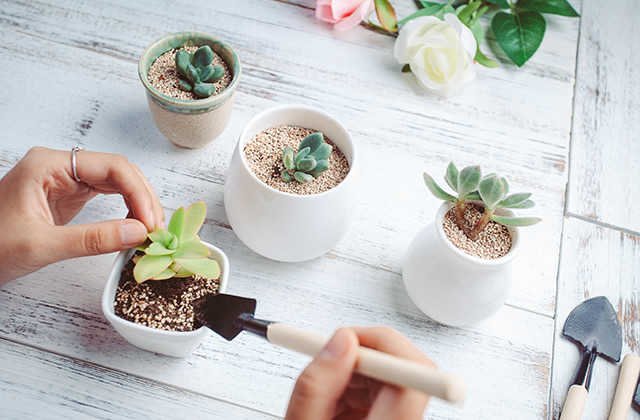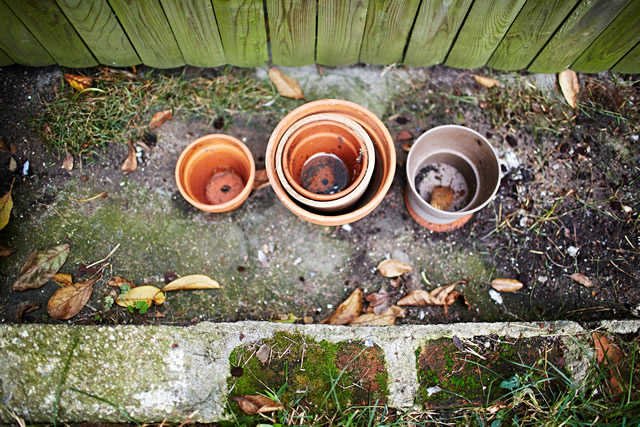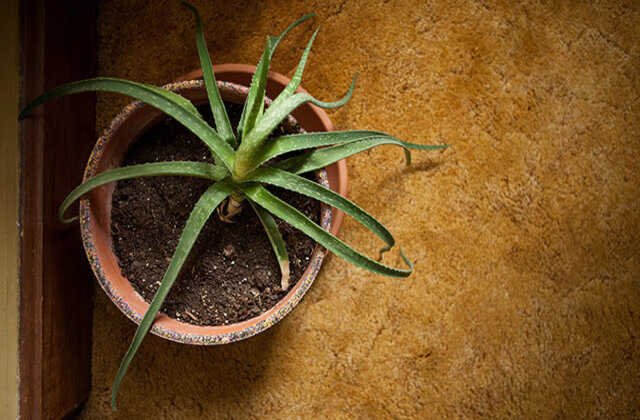What flower pots are better for balcony flowers to choose from
1. What Flower pots are better for balcony flowers?
1. Burning pot
The vegetarian pot is the mud tile pot. It is the most commonly used planting container. It can be divided into two types: red and gray pots. There are various specifications. The smallest diameter is about 10 cm, generally 14 ~ 33 cm, and large ones 39 ~59 cm.The water and exhaust drainage performance of the plain pot is good, which is conducive to plant growth. It is widely used in the cultivation of seedlings and the cultivation of seedlings.The lack of this Flower pot is rough, so when cultivating the finished seedlings, you should try to use a small pot as much as possible so that you can place it in a slightly larger basin when displaying the decoration indoors to make up for the shortcomings.
2. Zisha pot
Various flowers and plants are engraved on the purple sand basin, with a variety of styles, harmonious colors, simple and elegant, and antique beauty. It is more suitable for small leaf species for small leaf species on the indoor countertop.The disadvantage of this basin is that the water permeability of the water is slightly worse, and the appropriate species must be selected when used.
3. Plastic basin
Plastic pots are one of the commonly used plant containers for indoor leaf -viewing plants. They can be divided into hard plastic pots and soft -holding plastic basins.Hard plastic basins are generally small in size, light and beautiful, colorful, and are mostly used for viewing and cultivation, but their ventilation is poor and not conducive to growth. Therefore, it is not suitable for long -term planting.It is only used, and it must be loose, ventilated and drained multi -porous substrates with good ventilation and drainage performance.The soft plastic basin is only used for the nursery of indoor leaf -viewing plants, and is generally not used for ornamental cultivation.
4, glaze basin
The glaze pot is strong and gorgeous, but the drainage ventilation performance is poor.It is often used as a pelvan, which can also be used directly to cultivate large leaf -viewing plants, but it must be equipped with loose porosity matrix, otherwise the plant growth is poor.
5. Wooden basin
The wooden basin is used to cultivate large leaf -viewing plants and can also be used to cultivate some fleshy.Its specifications can be determined according to actual needs.This kind of inside and outside of the pot can paint different colors to improve the service life and coordinate with the color of the plant.It has a light scenery, good breathability, strong water and Fertilizer, low cost, and low cost. It is suitable for planting of various flowers. In addition, it can also be determined and processed according to the shape, size and cultivation of flowers according to the shape, size and cultivation of flowers.This pot is easily rotted by the erosion of water, Fertilizer, and microorganisms, and has a short service life.

6. Cement basin
Cement Flower pot is usedCementPlaced it.It is simple, with different shapes, and moderate weight, but it is suitable for garden and balcony greening.
7. glass basin
The glass Flower pot is not breathable and cannot be watered.The glass is transparent and you can see the internal moisture.In summer, the glass Flower pot must be placed in a cool place.Put the water layer with a glass Flower pot, and you can use pottery or large light stones.The glass flower is suitable for leaf insertion.
8.Porcelain basin
Porcelain pots are fired with porcelain soil, which is the best in the ceramic basin.It is bright in color, beautiful in appearance, and many varieties of color, but it has poor breathability and water seepage. It is difficult to master the wet and wetness of the pot soil with this pot.It is best not to plant flowers directly, only suitable for flowers for flowers.
In addition, there are all kinds of materials for decorative materials, such as glass tanks, vine products, stainless steel clads, etc. This type of pot is beautiful and generous, which can add a gorgeous and colorful atmosphere.But for display, not cultivation.
Second, the choice method and skills of Flower pots
1. Breathable,The bottom of the Flower pot must be opened. The function of the hole is to enhance the permeability of the pot soil, ensure that there is sufficient oxygen in the soil, and enhance the drainability of the pot soil.
2,Practical, although the appearance is important, it also needs to pursue practicality.If a flowerpot with a diameter of less than 7 cm, it is best not to buy it. Although it looks good, it is not suitable to buy it like a wine glass. In the end, you can only throw it aside.
3. If you plant vegetables, you can choose a rectangular, large -scale plastic basin, so that when sowing, it will not be too dense, and you can plant more. It is especially suitable for planting leeks.The space is well used.
4,For fruit trees, it is best to choose a larger, tall and deeper porcelain or plastic basin.In this way, you can install enough soil. The nutrients and nutrients of the fruit trees are not too big. It is still necessary to consider the load on the balcony and terrace to avoid affecting safety.
5. Many friends ask, can the wooden basin grow things, can it grow succulent?The answer is certainly possible, but the use of the wooden basin is relatively short. Although the planting plants are pretty, it is easy to be moldy and rotten for long -term watering.
6.Fairy balls are succulent. You can use smaller cartoon and cute pots to add many lively atmosphere to your home or balcony.Because the fairy ball does not need to fertilize frequently, the Flower pots with a diameter of about ten centimeters are almost enough.
7.Pay attention to environmental protection. Try not to use a one -time, light and thin plastic basin. It is not durable and polluted the environment. It is best to use a few years of pots.
three,How to choose Flower pot size
When choosing a Flower pot, pay attention to the size, and the height should be appropriate.The Flower pot is too large, just like thin people wearing large clothes, which affects the beauty, and the Flower pot is large and the plant is small. The water absorption ability is relatively weak.After watering, the pot soil is kept moist for a long time, and the flowers and trees are difficult to breathe, which can easily lead to rotten roots.The Flower pot is too small, it looks heavy and light, and affects the root development.In addition, the size and height of the Flower pot are available for reference:
1. The diameter of the Flower pot should be generally lined with the crown diameter of the plant.
2. Plants with mud balls. After putting in the Flower pot, there should be 2-4 cm gaps around the Flower pot to add the new soil.
3. Plants without mud balls, after the root system is put into the Flower pot, it must be stretched and should not be bent.If the main roots or the roots are too long, it can be properly trimmed, and then plant it into the pot.



